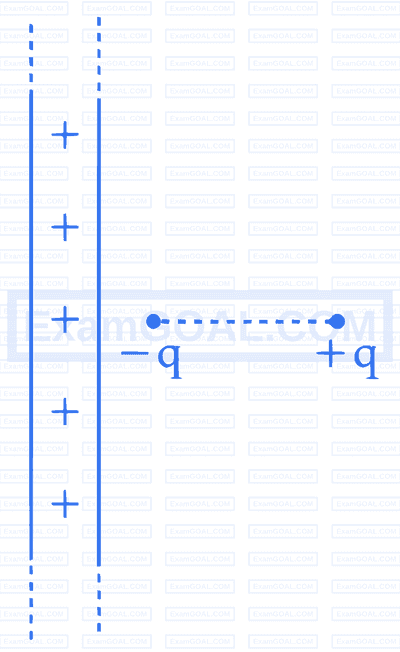
A small bob of mass 100 mg and charge $+10 \mu \mathrm{C}$ is connected to an insulating string of length 1 m . It is brought near to an infinitely long non-conducting sheet of charge density ' $\sigma$ ' as shown in figure. If string subtends an angle of $45^{\circ}$ with the sheet at equilibrium the charge density of sheet will be.
(Given, $\epsilon_0=8.85 \times 10^{-12} \frac{\mathrm{~F}}{\mathrm{~m}}$ and acceleration due to gravity, $\mathrm{g}=10 \frac{\mathrm{~m}}{\mathrm{~s}^2}$ )


A point charge causes an electric flux of $-2 \times 10^4 \mathrm{Nm}^2 \mathrm{C}^{-1}$ to pass through a spherical Gaussian surface of 8.0 cm radius, centred on the charge. The value of the point charge is :
(Given $\epsilon_0=8.85 \times 10^{-12} \mathrm{C}^2 \mathrm{~N}^{-1} \mathrm{~m}^{-2}$ )

An electric dipole is placed at a distance of 2 cm from an infinite plane sheet having positive charge density $\sigma_{\mathrm{o}}$. Choose the correct option from the following.


An electric dipole of mass $m$, charge $q$, and length $l$ is placed in a uniform electric field $\vec{E} = E_0\hat{i}$. When the dipole is rotated slightly from its equilibrium position and released, the time period of its oscillations will be :